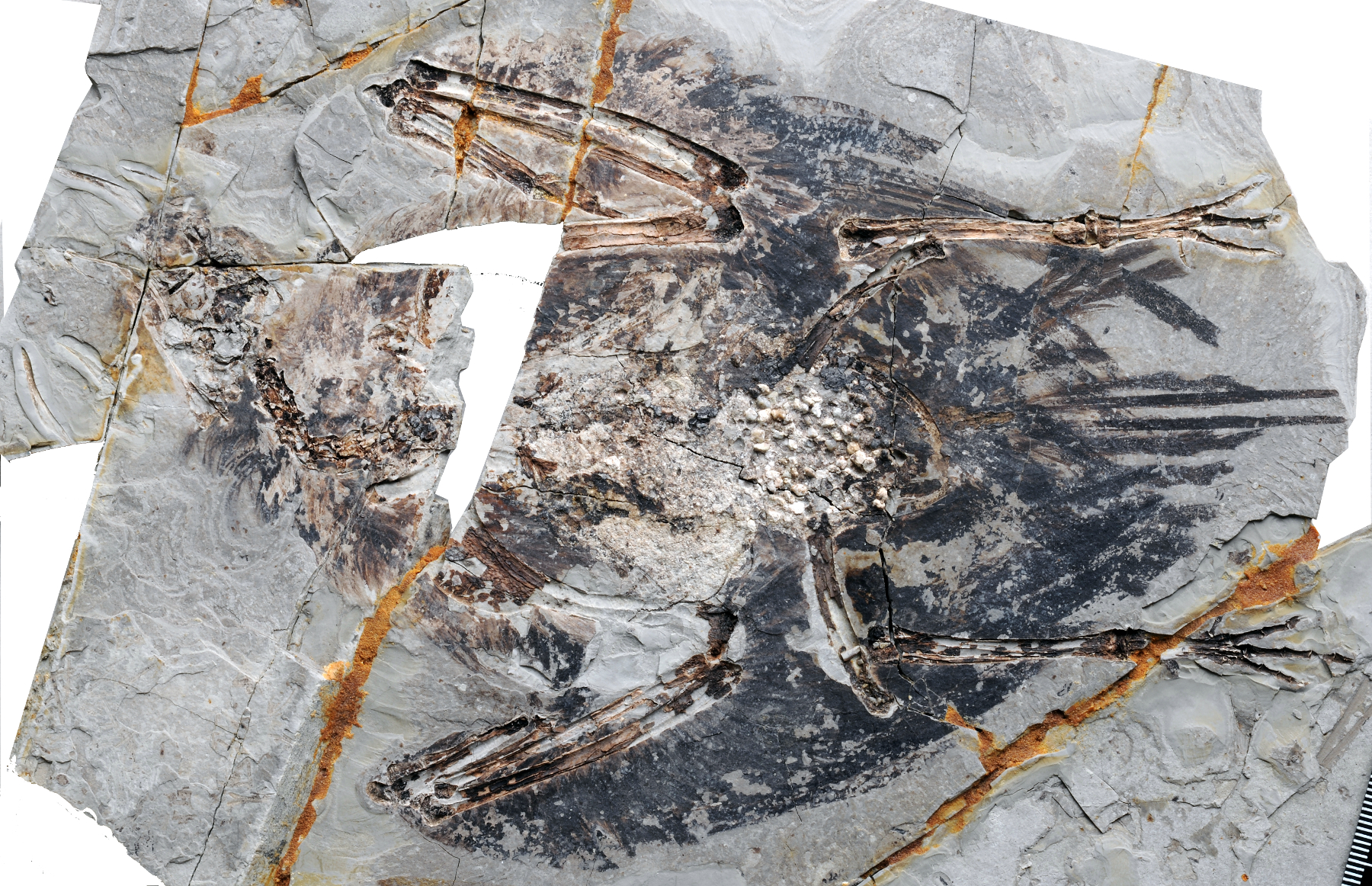
Turns out we didn’t need Jurassic Park:
The lungs and feathers of a bird that lived 120 million years ago had some of the same characteristics found in today’s birds, researchers reported yesterday (October 18) in PNAS… They examined a sample with scanning electron microscopy and found an extremely subdivided structure much like that enabling modern birds to take in enough oxygen to fuel flight. They also identified similarities between the specimen’s preserved feathers and its modern counterparts.Shawna Williams, “A fossil from the Cretaceous Period shows similarities to modern avian species.” at The Scientist
Significance: Archaeorhynchus spathula is a basal member of the Ornithuromorpha, the lineage that includes neornithines. Although this is the fifth reported specimen, unlike the others it preserves significant soft tissue, revealing a tail morphology previously unknown in Mesozoic birds and an exceptional occurrence of fossilized lung tissue. This identification is based on topographical location and anatomical features revealed mainly by scanning electron microscopy. A structure similar to that in neornithines indicates that the 120-Ma-old Archaeorhynchus may have been capable of acquiring the large quantities of oxygen needed to support powered flight. Skeletal features related to respiration remain primitive, supporting inferences that many physiological adaptations preceded skeletal changes during the evolution of the anatomically modern bird.
X. Wang, “Archaeorhynchus preserving significant soft tissue including probable fossilized lungs,” PNAS, doi:10.1073/pnas.1805803115/, 2018. (paywall) More.
Earth’s atmosphere had less oxygen than it does today, yet many dinosaurs were quick and active. Bird-like lungs may help explain that. From New Scientist:
“We thought maybe some of the dinosaurs would have lungs more like birds, and some would be less similar. But basically everything just looked like the birds,” says Brocklehurst. “I was a bit surprised at quite how similar to birds some of the early dinosaurs were.”
If even the very first dinosaurs to evolve had bird-like lungs, this may help explain why dinosaurs became so successful. The other animal groups who shared their world may not have had lungs as well suited to extracting oxygen from the air. “That difference may have let dinosaurs rise and become dominant,” says Brocklehurst. Chelsea Whyte, “Bird-like lungs may have helped dinosaurs rule the world” at New Scientist
Needless to say, that leaves less time for the bird lung to just somehow randomly evolve.
Follow UD News at Twitter!
See also: Study: Two years’ darkness provides clue to total dinosaur extinction